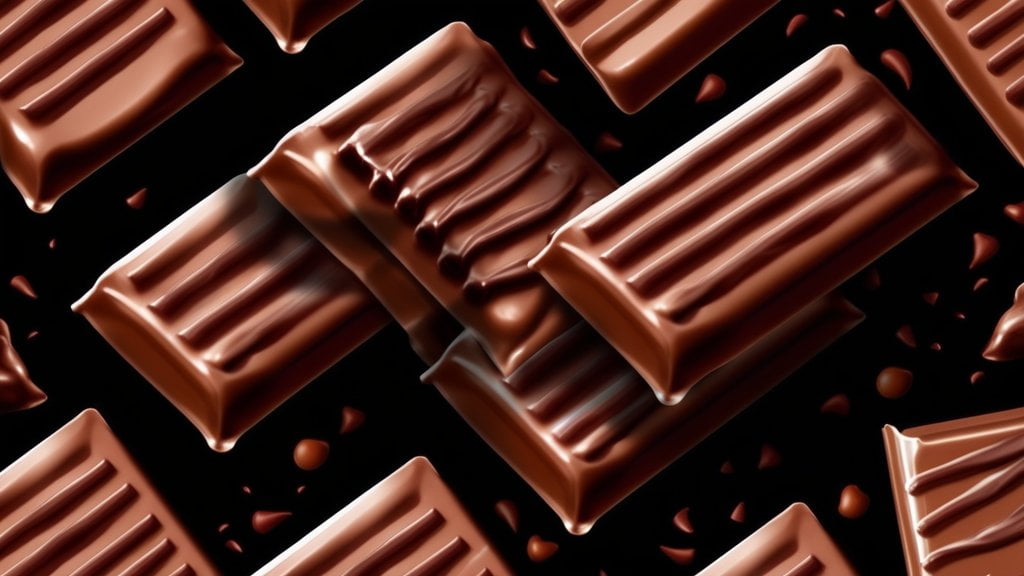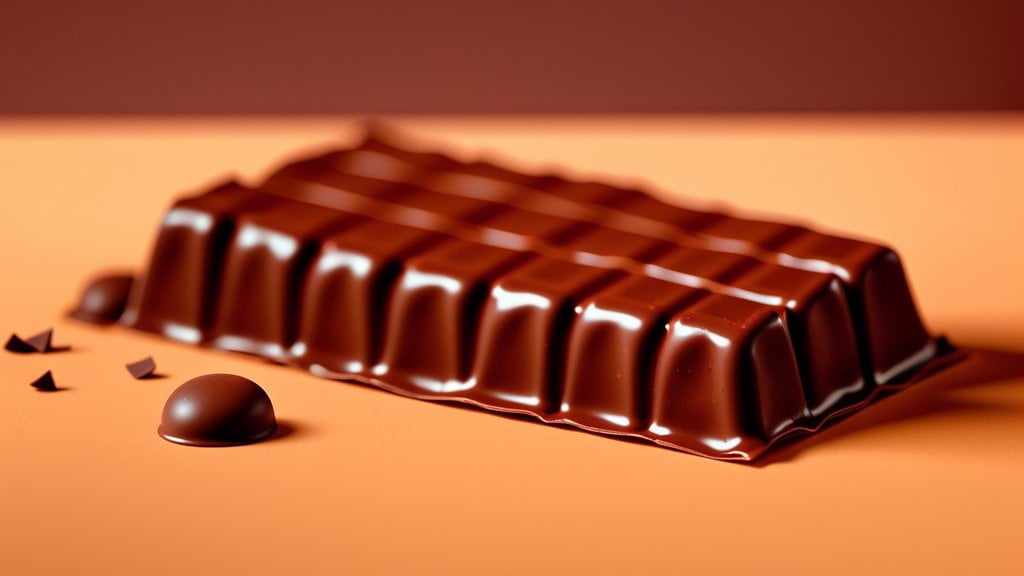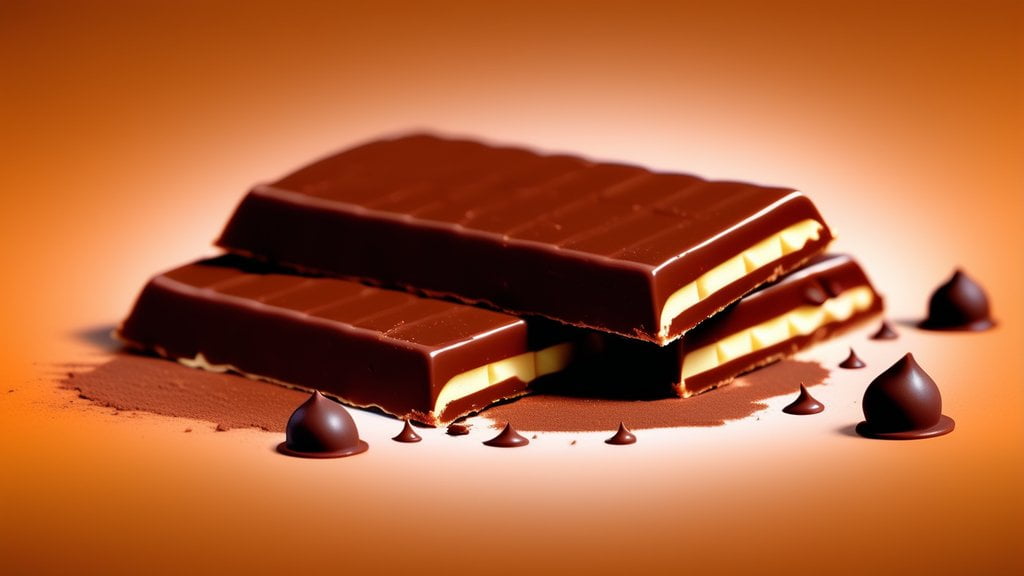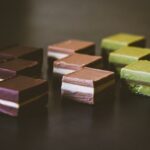Kit Kat, the beloved chocolate wafer bar, has more to offer than meets the eye. Delving into its history unveils fascinating tidbits that many may not be aware of. Did you know that during World War II, Kit Kat’s iconic blue packaging served as a symbol of hope and delight amidst a time of adversity? Today, this delightful treat boasts over 300 flavors, catering to a variety of taste buds around the world. But what led to such a diverse range? It turns out that war-time rations played a significant role in altering the Kit Kat recipe, leading to the creation of the indulgent delight we know today. Join us as we embark on a journey to unravel the rich history, surprising origins, and cultural significance of this iconic confectionery.
Key Takeaways:
– Kit Kat was initially made as a box of chocolates called Kit Cat.
– The unique square shape of Kit Kat bars was designed to fit easily inside workers’ lunch sacks.
– During World War II, Kit Kat switched from milk chocolate to dark chocolate and the wrapper was changed to blue.
– Kit Kat was first launched in London in 1935, making it 88 years old in 2023.
– The Kit Kat bar has had different names over the years.
– Standard Kit Kat bars consist of wafer layers covered in chocolate and come in various flavors.
– Kit Kat is the second most popular Halloween candy.
– Approximately 192 million Kit Kat bars are sold annually in the US.
– Globally, around 650 Kit Kat bars are consumed every second.
– Kit Kat has been around since 1935 and has become a well-established brand globally.
Fun Facts About Kit Kats

The Origins of Kit Kat
- Box of Chocolates: Did you know that Kit Kat was initially introduced as a box of chocolates called Kit Cat? However, it eventually transformed into the beloved chocolate wafer bar we know today. This fun fact showcases the evolution of Kit Kat and its humble beginnings as a different kind of sweet treat.
- Made to Accompany Packed Lunches: Have you ever noticed the unique square shape of Kit Kat bars? Well, it was actually designed to fit perfectly inside workers’ lunch sacks. This thoughtful design made Kit Kat a convenient and popular choice among individuals taking a break from work. Imagine enjoying a tasty Kit Kat while unwinding during your lunch break!
Kit Kat’s Historical Changes
- Wrapper Was Blue for Five Years: During World War II, there was a shortage of milk, which led Rowntree’s, the company behind Kit Kat, to switch from milk chocolate to dark chocolate in their bars. To signify this change, the wrapper was switched to blue. This fascinating fact showcases the company’s adaptability in challenging times.
- Different Names Over the Years: Kit Kat has undergone several name changes throughout its history. Before it was called Kit Kat, it sported various names. This fun fact sheds light on the brand’s evolution and how it settled on the iconic name we know today.
Kit Kat’s Popularity and Global Reach
- Kit Kat is 88 Years Old: As of 2023, Kit Kat is an impressive 88 years old! It was first launched in London on August 29, 1935, as a four-finger chocolate wafer bar. This remarkable longevity speaks to the brand’s enduring popularity and success.
- Standard Bars and Flavors: The classic Kit Kat bars consist of two or four pieces featuring three layers of crunchy wafer, delicately separated and covered by an outer layer of chocolate. In addition to the traditional milk chocolate variation, Kit Kat offers a range of flavors, including white and dark chocolate. Indulging in different Kit Kat flavors can be an exciting and delicious experience!
Kit Kat’s Allure and Impact
- Kit Kat as Halloween Candy: Did you know that Kit Kat is the second most popular Halloween candy? Its delectable combination of crispy wafer and creamy chocolate makes it an ideal treat during this spooky holiday. Grabbing a Kit Kat from the candy bowl is sure to bring a smile to both children and adults alike.
- 192 Million Kit Kats Sold Annually in the US: Kit Kat holds a special place in the hearts of Americans, with approximately 192 million bars being sold in the United States each year. Its widespread and consistent sales reflect the candy’s enduring popularity and the joy it brings to consumers.
- 650 Kit Kat Bars Consumed Every Second Globally: Kit Kat’s global appeal is astounding, with approximately 650 Kit Kat bars enjoyed every second around the world. That means, while you were reading this sentence, numerous people have already taken a bite of this irresistible chocolate treat. This staggering fact emphasizes Kit Kat’s status as a beloved confectionery worldwide.
- Invented in 1935: Lastly, let’s not forget that Kit Kat has been delighting our taste buds since 1935, making it a true confectionery icon. For over eight decades, Kit Kat has played a significant role in the sweet moments of people’s lives, offering a delightful combination of crispy wafer and smooth chocolate.
These fun facts about Kit Kats unravel the brand’s intriguing history, cultural impact, and unique characteristics. From its evolution from a box of chocolates to its square shape designed for packed lunches, Kit Kat has earned its place among the world’s favorite indulgent treats. So next time you savor a Kit Kat, remember the fascinating stories behind this iconic chocolate delight.
Here are some fun facts about the color blue that you may not know! Did you know that blue is the most popular color worldwide? From the deep blue sea to the vast blue sky, there is something truly captivating about this hue. Discover more intriguing facts about the color blue here.
Are you curious about the fascinating world of video game designers? Get ready to dive into a world of creativity and innovation! Did you know that the first video game designer was a woman named Carol Shaw? Explore more fun facts about video game designers here and satisfy your curiosity.
Step into the wonderful world of farm animals and uncover some interesting facts! Did you know that cows have best friends and can become stressed if they are separated? From quirky behaviors to surprising abilities, farm animals never cease to amaze us. Discover more fun facts about farm animals here and expand your knowledge.
Unveiling the World of Kit Kat: Fun Facts You Didn’t Know
Did you know that today there are over 300 flavors of Kit Kat to tantalize your taste buds? This iconic chocolate wafer bar has taken the world by storm with its delightful combinations and endless variations. Join me on a journey of discovery as we explore the rich history, surprising origins, and fascinating facts about Kit Kats that will leave you craving more.
Kit Kat Flavors Galore!
[Today there are over 300 flavors of Kit Kat.] Yes, you read that right! Kit Kat has become renowned for its wide array of flavors, captivating candy enthusiasts all around the globe. From the land of the rising sun, Japan boasts an astonishing 300 flavors, including daring options like wasabi[^1^]. This diverse range showcases the popularity and creative spirit of Kit Kat in Japan.
Across the Pacific in the United States, mint flavor takes the spotlight. Mint lovers rejoice, as this refreshing twist on the classic Kit Kat is exclusively available in the US[^1^]. It’s a perfect balance of cool and sweet that will leave you wanting more.
From Rejected Bars to Filling Delights
Here’s a surprising little secret: the filling in some Kit Kats is made from the crushed-up remnants of rejected bars. They don’t let anything go to waste! This resourceful approach ensures that every last bit of Kit Kat goodness is utilized to create a delectable wafer paste that becomes the filling for other Kit Kats[^1^].
Regional Flavors: Kit Kat Takes on Japan
Not only does Japan offer a bounty of flavors, but they also curate Kit Kat variations to specific regions and their specialties[^3^]. This means that each part of Japan can enjoy their own unique Kit Kat experience. Whether it’s cherry blossom, matcha, or sake-flavored Kit Kats, there’s always something new and exciting to discover.
Kit Kat: A Name with Historical Roots
Did you know that the name Kit Kat has its origins in the 17th century? The name Kit Kat is derived from an influential gathering place called the “Kit Cat Club,” frequented by artists and writers during that era[^7^]. With such a rich and historical background, Kit Kat adds a touch of elegance to our indulgent snacking.
Born as a Box of Chocolates
Believe it or not, when Kit Kat first came into existence, it wasn’t the chocolate wafer bar we know today. It was sold as a box of chocolates, bringing joy and sweetness to lucky recipients[^7^]. This transformation into the iconic square-shaped bars we love happened later, and we’re certainly grateful for it!
The Perfect Lunchtime Companion
Nestle, the creators of Kit Kat, recognized the potential of their chocolate bars as the perfect accompaniment to packed lunches. The convenient size and delightful taste made it an ideal choice for those on the go[^7^]. It’s no wonder that Kit Kats have become such a popular treat to enjoy during break times or on lunch breaks.
Blue Wrappers and Dark Chocolate: A Wartime Adaptation
During World War II, there was a shortage of ingredients, including milk. To adapt to the circumstances, Rowntree’s, the company behind Kit Kat, made a brilliant move. They switched from milk chocolate to dark chocolate, and the wrapper color was changed to blue[^7^]. This clever adaptation allowed Kit Kat production to continue and meet the wartime demands.
Advertisements Enter the TV Era
In 1955, Kit Kat made its first ever television advertisement. This marked a new and exciting medium for advertising at the time[^7^]. It was a milestone that propelled Kit Kat into the hearts and minds of a wider audience, paving the way for its ongoing success.
Key Takeaways:
- Kit Kat offers over 300 flavors, with Japan leading the way in the variety of unique and daring options[^1^].
- Mint-flavored Kit Kats are exclusively available in the United States, offering a refreshing twist to the classic treat[^1^].
- Kit Kat’s resourceful approach ensures that rejected bars are crushed and used as filling for other Kit Kats[^1^].
- In Japan, Kit Kat flavors are carefully curated to suit specific regional specialties, adding a personal touch to the candy experience[^3^].
- The name Kit Kat traces its origins back to the 17th century and a gathering place called the “Kit Cat Club”[^7^].
- Kit Kat was initially introduced as a box of chocolates before transforming into the iconic chocolate wafer bar that we know and love today[^7^].
- Nestle marketed Kit Kat as the perfect accompaniment to packed lunches, making it a go-to treat for those on the go[^7^].
- During World War II, Kit Kat adapted to the shortage of ingredients by switching to dark chocolate and changing the wrapper color to blue[^7^].
- Kit Kat made its first television advertisement in 1955, using this new medium to reach a wider audience[^7^].
Sources:
[^1^]: indianeskitchen.com – Fun Kit Kat Candy Bar Facts
[^3^]: spoonuniversity.com – 28 Fun Kit Kat Flavors You Can Try Right Now
[^7^]: mentalfloss.com – 12 Snappy Facts About Kit Kat
War time rations caused the Kit-Kat recipe to change.
During World War 2, the beloved Kit-Kat underwent a significant transformation due to war time rations. As the limited availability of ingredients threatened the production of this chocolate-coated wafer bar, the company had no choice but to alter the recipe. This adjustment led to a change in flavor that raised concerns among Kit Kat lovers.
According to The Fact Site, the Kit-Kat recipe was indeed affected by war time rations, forcing certain ingredients to be substituted due to their scarcity during the war. As a result, the chocolate bar became less flavorful than its original recipe, leaving fans disappointed.
Interestingly, before it became known as Kit Kat, the iconic chocolate treat was initially called “Rowntree’s Chocolate Crisp.” It wasn’t until 1949 that the name was officially changed to Kit Kat, a name that has since become synonymous with indulgence. (Source)
One might wonder why Kit Kats have a wafer filling. Well, this unique feature actually served as a cost-saving measure. By incorporating a wafer layer, Rowntree’s could keep production costs lower, making Kit Kats more affordable for consumers. If the entire bar were made of solid chocolate, the production costs would have skyrocketed. (Source)
But why are Kit Kat bars square in shape? The answer lies in their practicality. Rowntree’s aimed to create a chocolate bar that workers could easily carry in their lunch sacks. The square shape allowed for convenient packing and transportation, making Kit Kats the perfect on-the-go treat. (Source)
During WWII, Rowntree’s faced another challenge due to a shortage of milk. To compensate, they switched from milk chocolate to dark chocolate. In order to distinguish the different chocolate bar varieties, Kit Kat bars during the war were packaged in blue wrappers. This change in packaging color helped signify the transition from milk chocolate to dark chocolate. (Source)
Key Takeaways:
– War time rations caused the Kit-Kat recipe to change, resulting in a less flavorful chocolate bar.
– The original name of Kit Kat was “Rowntree’s Chocolate Crisp” before it was changed to Kit Kat in 1949.
– The use of a wafer filling in Kit Kats was a cost-saving measure to reduce production costs.
– The square shape of Kit Kat bars was designed for practicality, making them easy to pack and carry.
– During WWII, Kit Kat bars had blue packaging as a result of the switch to dark chocolate due to ingredient shortages.
Sources:
– The Fact Site: Link
– Mental Floss: Link

FAQ
Q1: What was the packaging color of Kit Kat bars during World War II?
A1: The packaging color of Kit Kat bars during World War II was blue. This change in color was a result of a shortage of milk, which led to the switch from milk chocolate to dark chocolate.
Q2: How many flavors of Kit Kat are currently available?
A2: Currently, there are over 300 flavors of Kit Kat available. These diverse flavors showcase the creativity and popularity of the brand, particularly in Japan where the range of flavors is extensive.
Q3: What caused the Kit-Kat recipe to change during the war?
A3: War time rations caused the Kit-Kat recipe to change. Limited availability of ingredients led to substitutions, resulting in a less flavorful chocolate bar compared to the original recipe.
Q4: How many Kit Kat flavors were available during World War II?
A4: During World War II, there were fewer flavors of Kit Kat available compared to today. The focus was on maintaining production and meeting wartime demands, which limited the variety of flavors.
Q5: What was the original name of the Kit-Kat bar?
A5: The original name of the Kit-Kat bar was “Rowntree’s Chocolate Crisp.” It wasn’t until 1949 that the name was changed to the familiar “Kit Kat” that we know today.
- Unlock 6000+ words beginning with he: A comprehensive analysis - April 20, 2025
- Mastering -al Words: A Complete Guide - April 20, 2025
- Master Scrabble: High-Scoring BAR Words Now - April 20, 2025
















